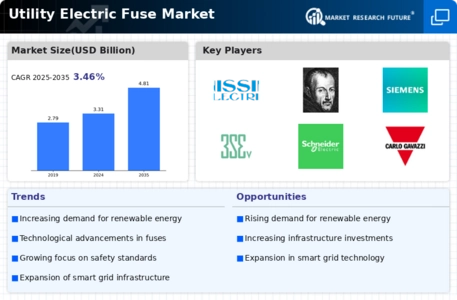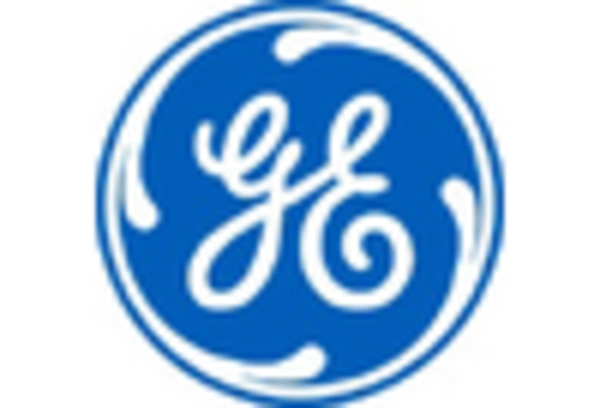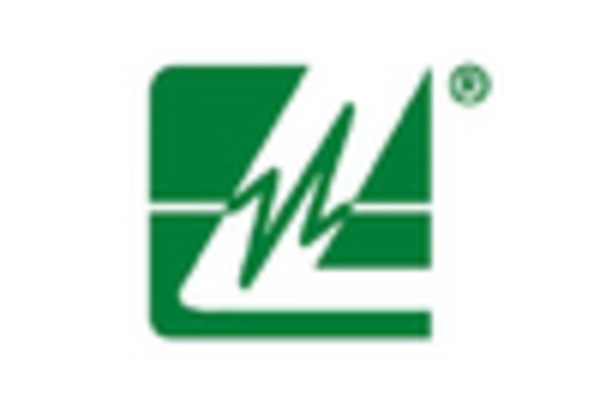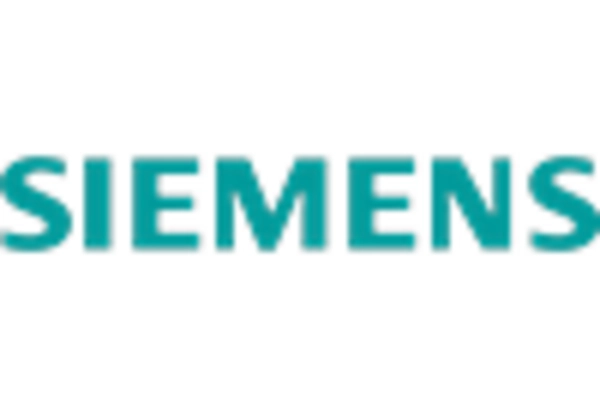Rising Energy Consumption
The Utility Electric Fuse Market is influenced by the rising global energy consumption, driven by urbanization and industrialization. As populations grow and economies expand, the demand for electricity continues to escalate. This trend necessitates the enhancement of electrical systems, including the installation of reliable fuses to protect against overloads and short circuits. Market data indicates that energy consumption is expected to increase by approximately 25% over the next decade, further emphasizing the need for robust electrical components. Consequently, the Utility Electric Fuse Market is poised for growth as utilities and industries invest in fuses that can handle higher loads and ensure system integrity.
Increasing Infrastructure Investments
Investment in infrastructure is a critical driver for the Utility Electric Fuse Market. Governments and private sectors are allocating substantial funds to upgrade aging electrical grids and expand energy distribution networks. According to recent reports, infrastructure spending is projected to reach trillions of dollars over the next decade, with a significant portion directed towards electrical systems. This investment is likely to boost the demand for utility electric fuses, as they are essential components in ensuring the safety and reliability of electrical systems. As utilities modernize their infrastructure, the Utility Electric Fuse Market is expected to benefit from increased sales and new product developments.
Shift Towards Renewable Energy Sources
The transition towards renewable energy sources is significantly impacting the Utility Electric Fuse Market. As more countries commit to reducing carbon emissions, the integration of renewable energy systems, such as solar and wind, is becoming more prevalent. These systems require specialized fuses to manage the unique electrical characteristics associated with renewable energy generation. The growing adoption of distributed energy resources is expected to create new opportunities for the Utility Electric Fuse Market, as utilities and energy providers seek reliable solutions to protect their infrastructure. This shift towards renewables is likely to drive innovation and demand for advanced fuses tailored for these applications.
Technological Innovations in Fuse Design
The Utility Electric Fuse Market is experiencing a surge in technological innovations that enhance the performance and reliability of fuses. Advanced materials and manufacturing techniques are being developed, leading to fuses that can withstand higher temperatures and currents. For instance, the introduction of smart fuses equipped with monitoring capabilities allows for real-time data collection and analysis, improving maintenance and reducing downtime. This trend is likely to drive market growth as utilities seek to upgrade their infrastructure to accommodate modern energy demands. Furthermore, the integration of digital technologies in fuse design is expected to create new opportunities for manufacturers, potentially increasing their market share in the Utility Electric Fuse Market.
Regulatory Compliance and Safety Standards
Regulatory compliance plays a pivotal role in shaping the Utility Electric Fuse Market. Governments and regulatory bodies are implementing stringent safety standards to ensure the reliability and safety of electrical systems. These regulations often mandate the use of high-quality fuses that meet specific performance criteria. As a result, manufacturers are compelled to innovate and produce fuses that comply with these standards, driving market growth. The increasing focus on safety in electrical installations is likely to lead to a higher demand for utility electric fuses, as utilities strive to meet regulatory requirements and enhance system reliability.

















Leave a Comment